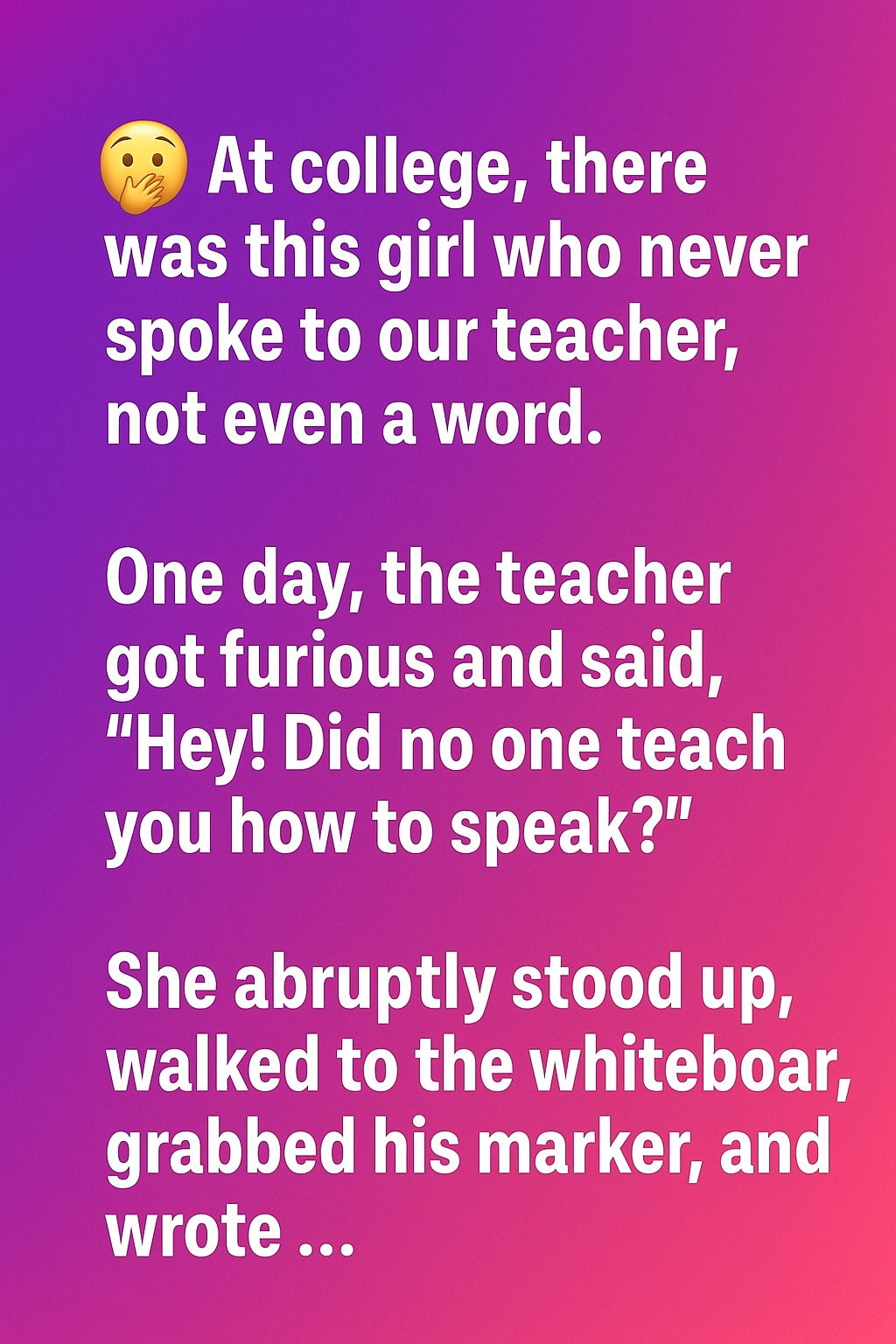At college, there was a girl who never spoke to our teacher — not even once. She always sat quietly in the front row, taking notes, listening carefully, and submitting every assignment on time. Most of us assumed she was just shy. But one day, during a discussion, the teacher grew impatient and snapped, “Hey! Did no one ever teach you how to speak?” The room went completely silent.
Without hesitation, she stood up, walked calmly to the whiteboard, took the teacher’s marker, and began to write. “I lost my voice in an accident two years ago,” she wrote in neat, steady letters. “But that doesn’t mean I have nothing to say.” The words hung in the air like a quiet echo, more powerful than any sound could have been. The teacher froze, realizing the weight of his mistake, while the rest of us sat speechless, guilt and admiration swirling together in the silence.
She turned to the class, gave a small smile, and wrote again: “Most people don’t ask. They just assume.” That moment changed everything. From that day on, the teacher began communicating with her through written notes and gestures. A few of us started learning simple sign language, eager to connect. The classroom slowly transformed — it became more patient, more compassionate, more aware.
Years later, I still remember her. She taught us something no textbook ever could: that strength isn’t always loud, and that the quietest people often carry the most powerful voices. Sometimes, the greatest lessons are not spoken — they’re felt, understood, and remembered long after the words are gone.
